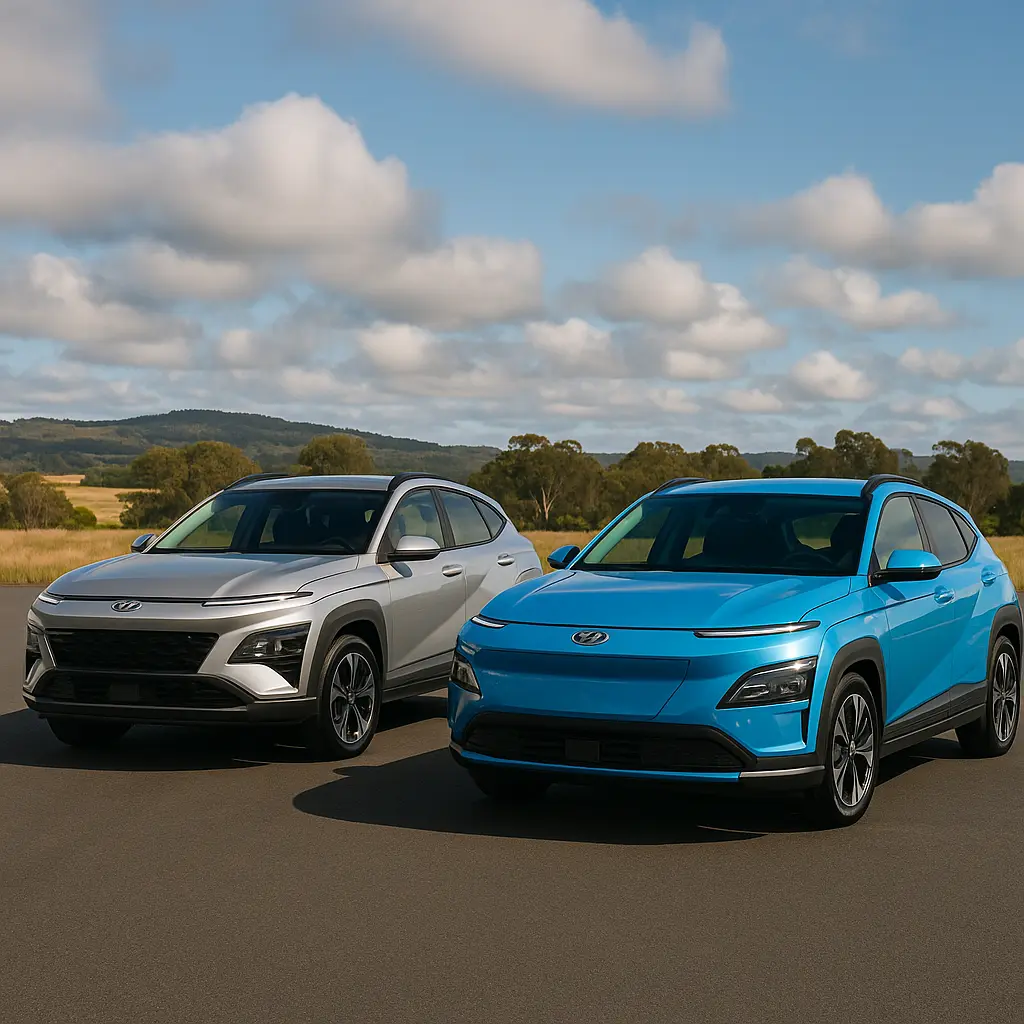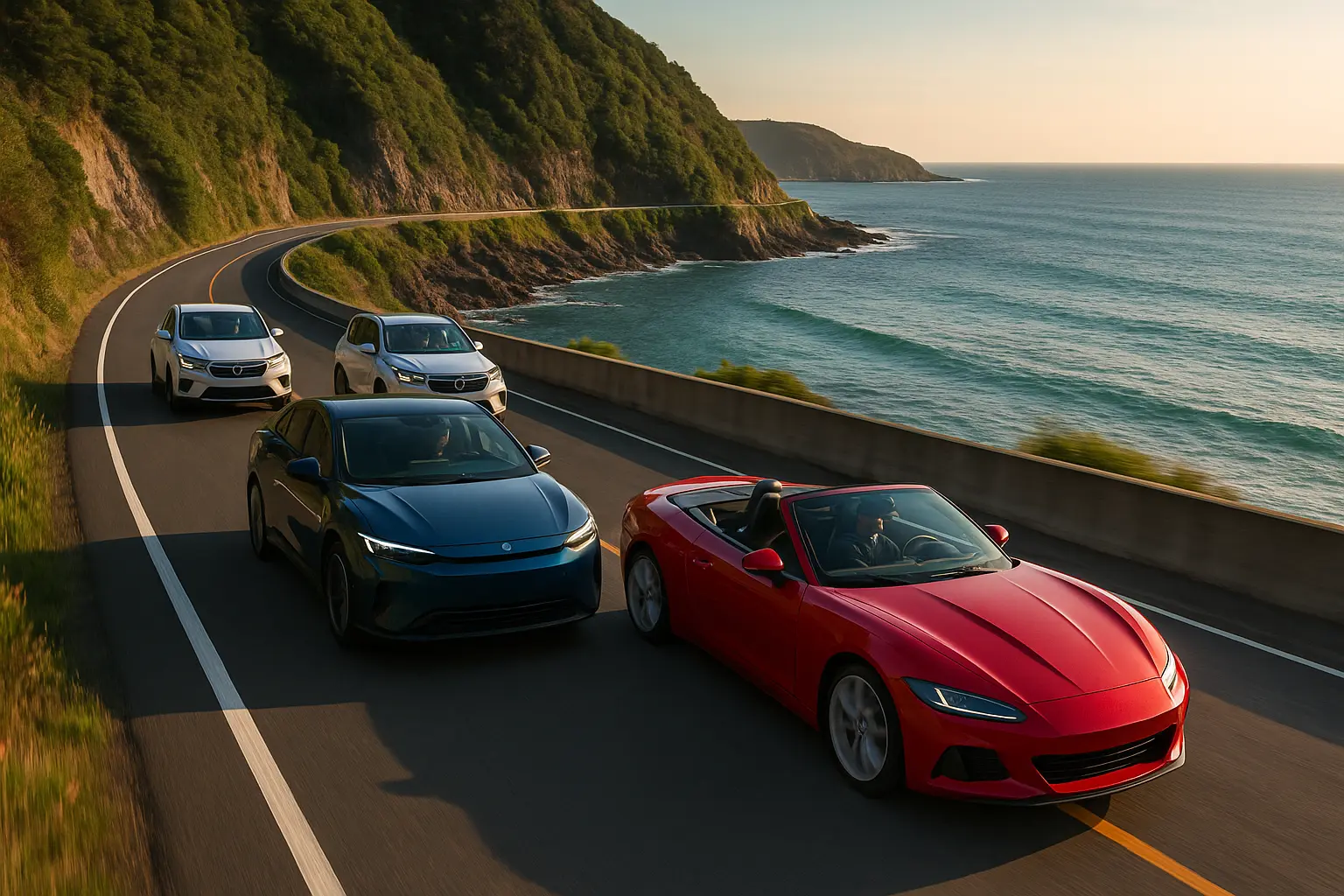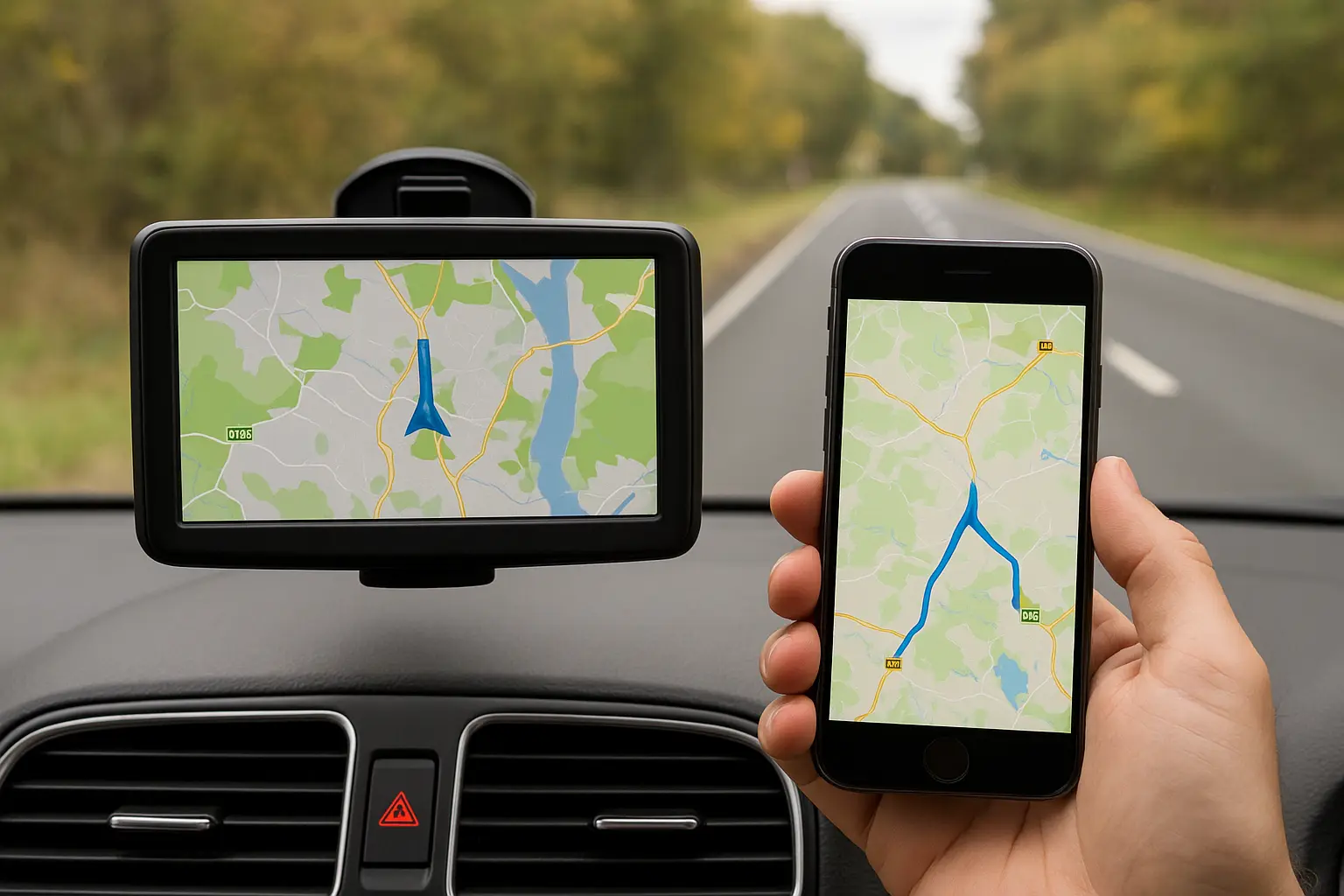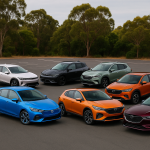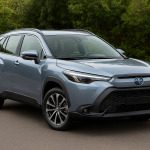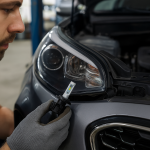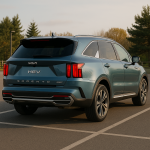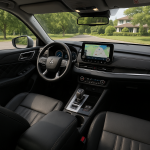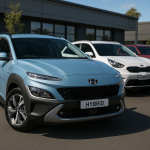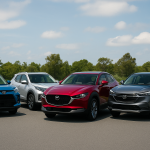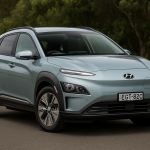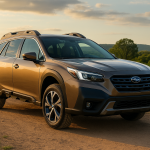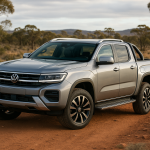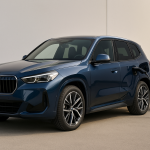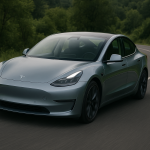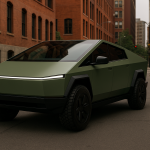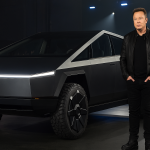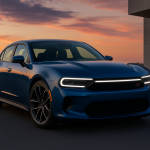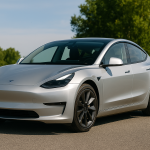The Hyundai Kona has been one of Australia’s favourite compact SUVs since its debut in 2017. It carved out a strong reputation by blending city-friendly size with SUV practicality, along with bold styling and a decent feature list. Now, in 2025, Hyundai has fully refreshed the Kona with a sharper design, more interior space, and a lineup that includes petrol, hybrid, and full-electric variants.
With Australian buyers increasingly weighing the pros and cons of petrol versus electric, the 2025 Kona stands out by offering both. In this review, we’ll compare the key trims, look at what’s changed, and examine whether the Kona is the right small SUV for Aussie families, commuters, and EV early adopters.
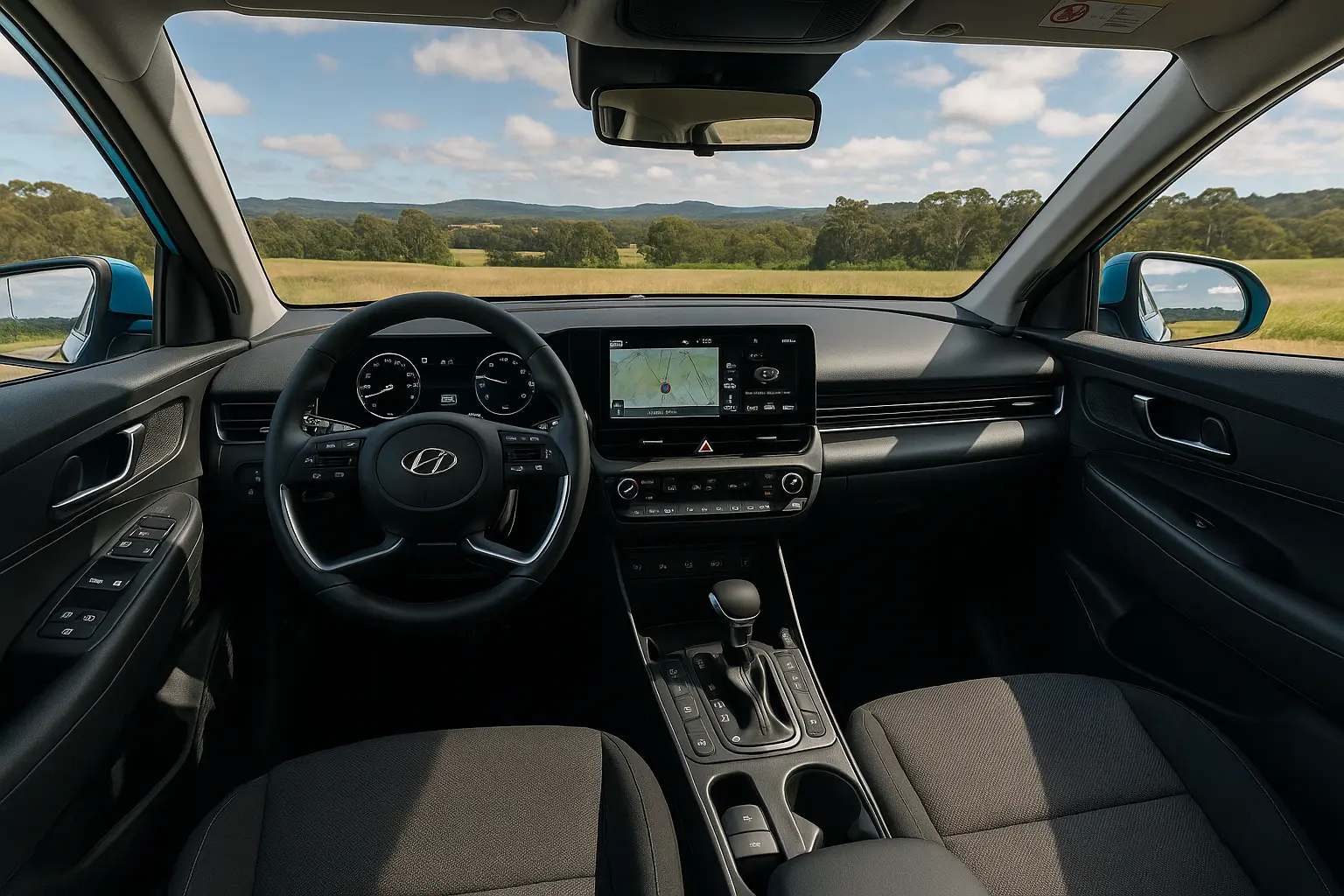
Exterior Design: Bigger, Sharper, and More Modern
The new Kona has grown in size compared to its predecessor. Measuring 4,350mm in length, it’s longer by around 150mm, and this increase translates to better interior room—a key complaint with the previous model.
The styling is unmistakably Hyundai. Up front, the slim LED light bar stretches across the bonnet, giving it a futuristic vibe, especially on the EV variant where the closed-off grille adds a clean, aerodynamic look. Petrol models feature a more traditional mesh grille but still carry the same light signature.
Side-on, the new Kona looks more mature, with sculpted lines that balance sportiness and sophistication. Wheel sizes range from 17 to 19 inches depending on the trim, with EV models often showcasing aero-optimised designs for efficiency.
At the back, Hyundai continues the light-bar treatment, with full-width tail lights enhancing its presence at night. The EV variant gains unique bumper and diffuser elements for improved aerodynamics.
This design direction aligns the Kona with Hyundai’s electric-focused Ioniq range, making it look like a “mini Ioniq 5,” which will appeal to buyers wanting modern styling in a smaller, affordable package.
Interior: Tech-Focused and More Spacious
Step inside the 2025 Kona and you’ll immediately notice the boost in cabin quality and tech. Hyundai has clearly aimed at younger, tech-savvy buyers who expect digital convenience without compromising comfort.
Highlights include:
- Dual 12.3-inch displays: One for the digital instrument cluster and one for infotainment, seamlessly connected in a single curved panel.
- Wireless Apple CarPlay & Android Auto (standard on most trims).
- OTA (Over-the-Air) updates: Hyundai joins the growing list of brands offering software updates without dealer visits.
- Ambient lighting: Configurable to match driving moods.
- Physical buttons retained: For climate control and volume, a relief for drivers who dislike full touch-based controls.
Space is significantly better. The wheelbase increase (now 2,660mm) translates into more rear-seat legroom, making the Kona a stronger contender against the Kia Seltos and Toyota Corolla Cross. Boot space is also improved, with 466 litres available in the petrol version, and slightly less in the EV due to battery packaging.
The interior materials vary by trim, from hard plastics in entry models to premium soft-touch panels and leather upholstery in higher trims. EV models often get unique colour schemes and recycled materials to highlight their eco-friendly angle.
Powertrain Options: Petrol, Hybrid, and EV
One of the standout aspects of the 2025 Kona is its multi-powertrain approach, catering to all buyer types. Let’s break down the options.
Petrol Engines
- 2.0-litre naturally aspirated four-cylinder (110kW/180Nm) paired with a CVT. Ideal for city commuting and budget-conscious buyers.
- 1.6-litre turbocharged four-cylinder (146kW/265Nm) mated to an 8-speed automatic. Available with AWD, this is the sporty choice with punchier acceleration.
Hybrid (HEV)
- 1.6-litre petrol engine + electric motor delivering 103kW combined.
- Paired with a dual-clutch transmission.
- Designed for fuel economy, achieving under 5.0L/100km in real-world conditions.
- Positioned to compete directly with the Toyota Corolla Cross Hybrid.
Full Electric (EV)
Two battery options are available in global markets, with Australia expected to receive both:
- Standard range: 48.6kWh battery, 114.6kW motor, approx. 370km WLTP range.
- Long range: 65.4kWh battery, 160kW motor, approx. 490km WLTP range.
Charging supports up to 100kW DC fast-charging, allowing 10–80% in around 40 minutes. AC charging at 11kW is also supported.
The Kona EV also features vehicle-to-load (V2L), enabling owners to power appliances, camping gear, or even another EV in emergencies—a growing trend among electric SUVs.
Driving Experience
Petrol Models
The 2.0-litre petrol feels adequate for city driving but can feel strained on highways when fully loaded. It prioritises smoothness over excitement. Fuel consumption hovers around 7.2L/100km.
The 1.6-litre turbo offers noticeably better performance, especially when overtaking or merging onto highways. The AWD system provides extra grip in wet conditions, making it the pick for drivers wanting versatility.
Hybrid
The hybrid shines in urban traffic, where stop-start efficiency is maximised. It delivers smooth acceleration, and the electric assist helps reduce fuel consumption dramatically. It’s not designed for performance but for those chasing savings at the pump.
EV
The electric Kona delivers instant torque, making it feel quicker than the numbers suggest. With a 0–100km/h time of around 7.5 seconds (long-range model), it’s brisk for a compact SUV. The quietness of the cabin combined with smooth acceleration makes it ideal for city commuting.
Ride quality across the range is firmer than some rivals but remains comfortable for daily use. Steering is light, enhancing urban manoeuvrability.
Safety Features
The 2025 Kona is equipped with Hyundai’s SmartSense safety suite, and Australian models are expected to carry a 5-star ANCAP rating. Features include:
- Forward Collision-Avoidance Assist with pedestrian and cyclist detection.
- Lane Keeping Assist & Lane Following Assist.
- Blind-Spot Collision Avoidance.
- Rear Cross-Traffic Alert with automatic braking.
- Adaptive Cruise Control with stop-and-go.
- Surround-view monitor on higher trims.
Child-friendly features such as ISOFIX mounts, rear seat reminder, and safe-exit assist make it a strong choice for families.
Ownership Costs & Warranty
Hyundai backs the Kona with its well-known 5-year/unlimited kilometre warranty in Australia, plus an 8-year warranty for EV batteries.
Service intervals differ:
- Petrol models: every 12 months/15,000km.
- Hybrid & EV models: every 12 months/15,000km, but with lower service costs due to fewer moving parts.
Running costs are where the EV gains ground. For an average Aussie commuter doing 15,000km per year, charging costs are significantly lower than refuelling with petrol. Hyundai’s EV battery preconditioning also ensures consistent charging performance even in colder climates.
Insurance premiums vary depending on whether buyers choose petrol or EV, but the Kona’s strong safety record and reasonable repair costs help keep rates competitive compared to European rivals.
How It Compares to Rivals
The compact SUV segment in Australia is fiercely competitive. Let’s see where the Kona fits.
- Toyota Corolla Cross: The closest rival, especially in hybrid form. The Kona EV offers more tech, while the Corolla Cross edges ahead on brand loyalty and dealer network.
- Kia Seltos: Shares underpinnings with the Kona petrol models but lacks an EV option.
- MG ZS EV: Cheaper electric SUV, but the Kona wins on design, safety, and brand reputation.
- Mazda CX-30: A more premium feel but only available in petrol, limiting its eco appeal.
- BYD Atto 3: A strong new entrant in the EV space with competitive pricing, but Hyundai offers a broader dealer service network.
Verdict: Who Should Buy the 2025 Hyundai Kona?
The beauty of the 2025 Kona lies in its versatility. Few compact SUVs in Australia give buyers the choice of petrol, hybrid, and electric in one model line.
- Choose Petrol if you want an affordable entry point and simple refuelling convenience.
- Choose Hybrid if you want lower running costs without range anxiety.
- Choose EV if you’re ready to embrace the future, with long-term savings and cutting-edge features.
The new Kona also ticks boxes for tech, safety, and design, making it a well-rounded option in Australia’s crowded compact SUV market.
Final Thoughts
The 2025 Hyundai Kona demonstrates Hyundai’s ability to adapt to a shifting automotive landscape. It blends futuristic design with practical features, gives buyers true powertrain flexibility, and offers a tech-rich interior that appeals to modern Aussies.
If you’re looking for a compact SUV that can fit city life while still being road-trip capable, the Kona deserves a spot high on your shortlist—whether you want petrol familiarity or to leap into the EV age.
Leave a comment
Your email address will not be published. Required fields are marked *


